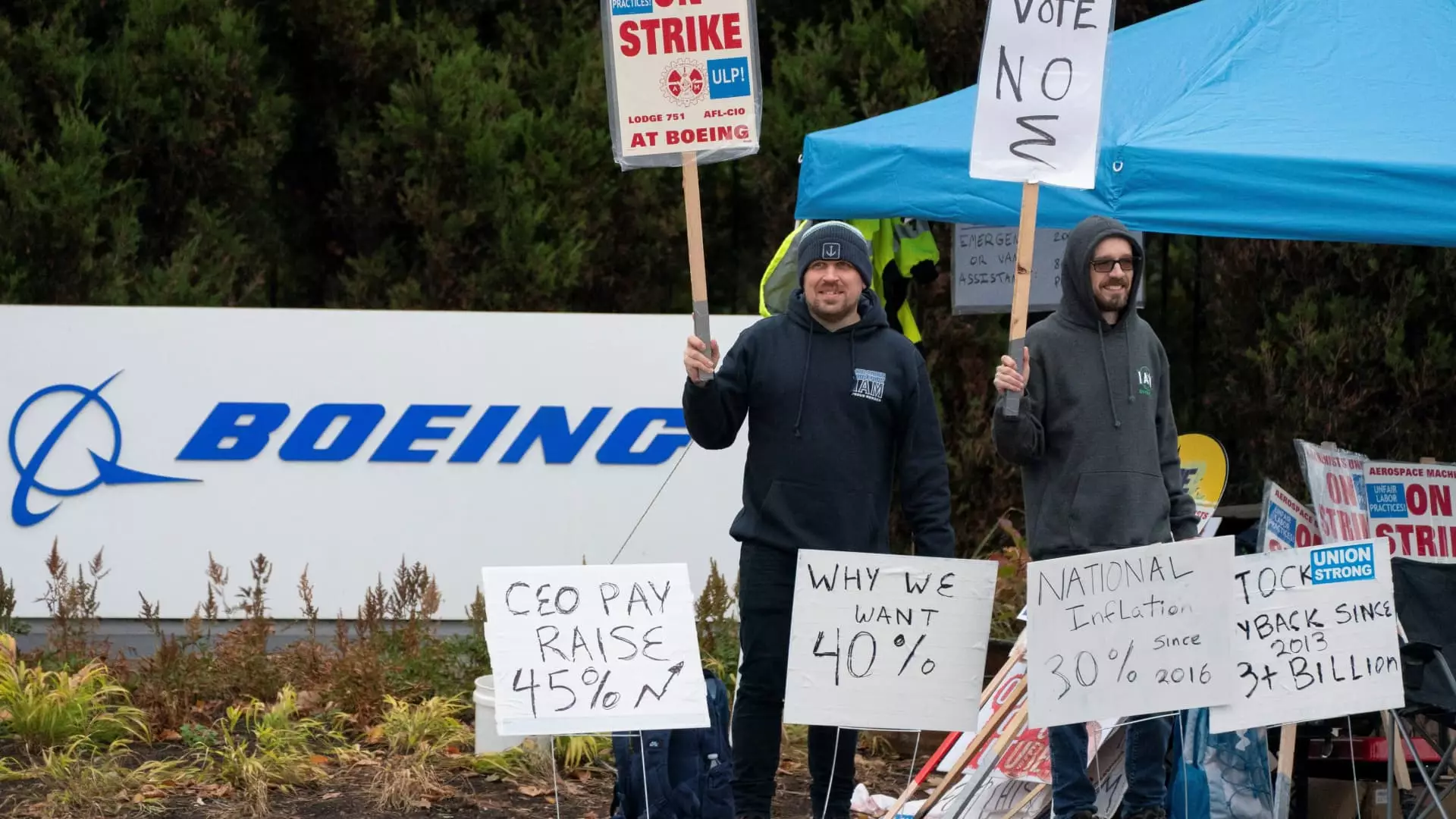The recent strike by Boeing’s machinists has raised significant attention in both the industrial and political arenas. Initiated on September 13, the strike marked a pivotal moment for over 32,000 machinists affiliated with the International Association of Machinists and Aerospace Workers, particularly in the Seattle area. This collective action was sparked by dissatisfaction regarding wage proposals and working conditions. As the strike escalated into its seventh week, the ramifications became increasingly evident, affecting not only Boeing’s production capabilities but also the broader economy, with job numbers taking a hit.
To address the growing unrest and economic fallout from the labor strike, Boeing has put forth a new proposal that includes a 38% wage increase spread over four years—a slight uptick from the previously rejected 35% offer. When compounded, these wage increases could culminate in nearly a 44% total uplift in worker salaries. Additionally, the proposal presents machinists with a choice of financial incentives: a one-time ratification bonus of $12,000 or a combination of a $7,000 bonus plus a $5,000 contribution to their 401(k) plans. The union leadership urges members to ratify this offer, as prolonged strikes could jeopardize their current gains and possibly lead to less favorable terms in the future.
For Boeing, the urgency of reaching an agreement cannot be overstated. The production lines have ground to a halt, threatening to exacerbate the company’s financial woes and placing a strain on its workforce. Boeing’s management expressed the need to restore productivity and focus on delivering high-quality aircraft. As the aerospace giant grapples with financial losses—exceeding $6 billion in the last quarter alone—the stakes are high not just for the company, but also for its employees who seek better compensation amidst rising living costs in the Seattle area.
The Biden administration played a role in the negotiations, reflecting the high-stakes nature of the strike. Acting Labor Secretary Julie Su’s involvement indicates the government’s recognition of the strike’s implications, which extend beyond Boeing’s operations to national employment figures and the overall economy. President Biden himself commended both the union and Boeing for their dialoguing and reiterated the importance of securing a strong contract that honors the sacrifices of the machinists.
While the new contract proposal represents a potential turning point, it also brings to light deeper issues the company faces, particularly regarding its production strategies. The decision to relocate the production of the 787 Dreamliner to a non-union factory in South Carolina remains a contentious point among workers, reflecting anxieties about job security and union representation. This decision has led to questions regarding Boeing’s long-term commitment to its workforce in the region.
Furthermore, Boeing has been under immense scrutiny due to past safety issues and production flaws, which have significantly contributed to its downward financial spiral. The company is contending not only with labor disputes but also with challenges in stabilizing its operations in the wake of these issues.
As Boeing navigates through these turbulent waters, the forthcoming vote on the new contract proposal takes on crucial importance. It embodies not only the interests of the machinists but also the company’s ambition to regain momentum in a competitive aerospace market. The agreement could potentially mark the beginning of a recovery phase for Boeing, provided that both management and workers unite to tackle the pressing challenges ahead. The outcome of the workers’ decision will be pivotal for Boeing’s future and may ultimately set a precedent for labor relations in the U.S. aerospace industry.

